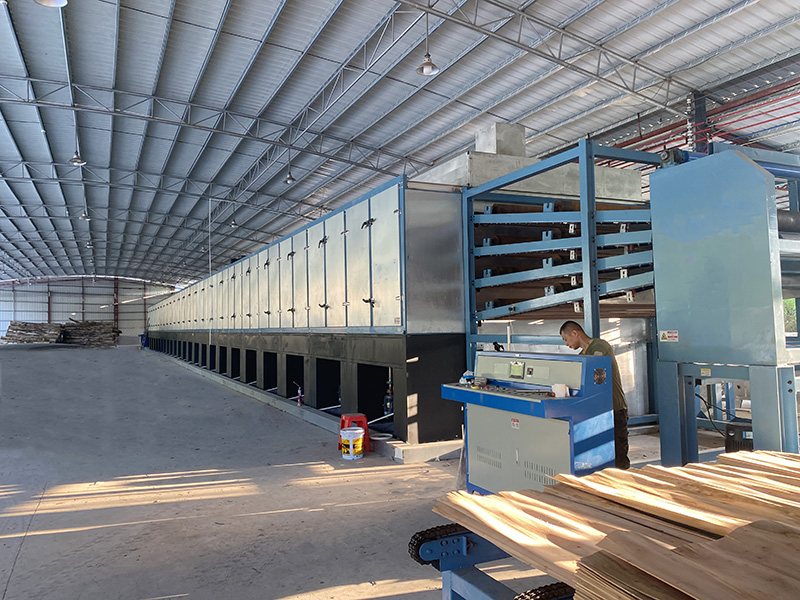The quality of veneer drying significantly influences the appearance, strength, and stability of plywood. In practice, issues such as uneven drying, edge curling, and surface discoloration are common. This article identifies five major factors affecting drying performance and offers targeted solutions.
1. Uneven Feeding
Inconsistent veneer thickness or irregular stacking leads to under- or over-drying in certain sections. Automatic feeding systems help maintain consistent veneer thickness and orientation, avoiding blockages and overlaps.
2. Improper Temperature Control
Overheating can cause veneer scorching and yellowing, while low temperatures result in incomplete drying. Multi-zone temperature control with properly set heating and cooling curves is recommended.
3. Inadequate Moisture Exhaust
Trapped moisture may cause discoloration or reabsorption, especially in the cooling zone. Ensure exhaust channels are clear and install automatic airflow adjustment systems for effective humidity release.
4. Mismatched Conveyor Speed
Too fast a speed leads to insufficient drying; too slow wastes energy and causes warping. Conveyor speed should be matched to veneer type, thickness, and initial moisture. Variable frequency drives are ideal for dynamic adjustment.
5. Unstable Heat Source
Inconsistent heat output, especially from biomass boilers, leads to temperature fluctuations. Use automated combustion controls or thermal buffer systems to maintain stable heat delivery.

Copyright By © Shandong Shine Machinery Co.,Ltd